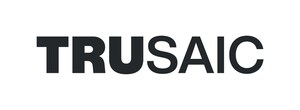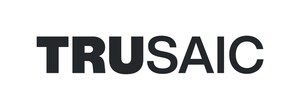Statewide Gender and Race/Ethnicity Pay Gaps in California Exceed $46 Billion
Trusaic Analysis of California SB 973 Pay Data Identifies Large Pay Differences
LOS ANGELES, Oct. 13, 2021 /PRNewswire/ -- Trusaic, a leading regulatory compliance software company specializing in advanced pay equity analytics, has completed an analysis of California SB 973 pay data that shows an annual gender pay gap in 2020 of $46B and an even higher race/ethnicity annual gender pay gap of $61B. The analysis is based on summarized, anonymized pay data filings the company helped prepare on behalf of organizations, extrapolated to the entire workforce in California.
SB 973 authorizes the California Department of Fair Employment and Housing (DFEH) to enforce the annual reporting of pay and hours-worked data for employers with more than 100 employees. DFEH examines reported pay data for evidence of both pay discrimination and non-pay employment discrimination. Beyond requiring government pay data reporting, pay equity is increasingly being scrutinized as it is a foundational measurement of organizational effectiveness in achieving diversity, equity, and inclusion (DEI) goals.
The analysis identified pay differences with large, statewide implications. Trusaic analyzed pay data across six industries and 10 EEO-1 job categories. The key findings from Trusaic's analysis, include:
- Substantial pay gap differences by gender and race/ethnicity with the race/ethnicity pay gap exceeding the gender pay gap by 32%.
- Annualized pay gap contribution from the professional, scientific and technical services (PSTS) and manufacturing industries contributing over twice as much to the gender pay gap and over 62% to the race/ethnicity pay gap relative to these industries' employee proportions of the California workforce.
- The executives and technicians job categories contributed over three times as much to the annualized gender pay gap. Executives and officials & managers job categories contributed over twice as much to the gender pay gap relative to these job categories' employee proportions of the California workforce.
Adjusting for industry size, PSTS had the largest annual gender pay gap per employee of about $7,800, followed closely by manufacturing with an annual gender pay gap per employee of about $7,000. PSTS also had the largest annual race/ethnicity pay gap per employee of about $10,200. Manufacturing again followed with an annual race/ethnicity pay gap per employee of about $7,300.
After adjusting for job category size, executives had the largest annual gender pay gap per employee of about $11,200. Since a given percentage pay gap will result in a larger dollar pay gap in segments with higher compensation, this result isn't surprising. The second largest gender gap by job category, however, was more surprising. The technicians category showed an annual gender pay gap per employee of about $10,400.
For all EEO-1 job categories, non-males are more often disfavored and have lower wages than males, across locations and industries. By gender, for all industries except PSTS, pay gaps across locations and EEO-1 categories found non-males to be disfavored by at least a factor of 5 to 1.
Comparing white (non-Hispanic) and nonwhite (or Hispanic) employees, executives have the largest annual race/ethnicity pay gap per employee of about $12,700, followed by officials & managers (of about $10,400) and professionals (of about $7,800). The smallest race/ethnicity pay gaps per employee were found in service and laborers (both about $800).
These pay gaps were measured controlling for industry, EEO-1 job category and location in the same way that it is anticipated that the DFEH will analyze the full California SB 973 pay data set. As the analysis shows, even after accounting for these differences, substantial pay gaps remain. These findings highlight the importance of conducting a proactive pay equity audit in order to get ahead of anticipated enforcement.
The trend towards increased reporting requirements is on the rise. Most recently, the Office of Federal Contract Compliance Programs (OFCCP) announced that effective immediately, it would be using EEO-1 component 2 pay data for enforcement. Employers need to stay ahead of pay data reporting requirements at the federal, state, and city level with analytics that provide visibility into employee pay gap data. Trusaic's free, pay data risk assessment identifies evidence of pay discrimination and discrepancies in job category representations which notifies employers of potential issues before they file.
"There is so much work to be done to achieve equal pay for equal work. Employers should expect pay equity to come into even greater focus as state and federal government bodies enact legislation aimed at closing the pay equity gap," said Robert S. Sheen, CEO and Founder of Trusaic. "New and existing pay equity laws combined with pressure from boards of directors, investors, consumers, and employees themselves, mean organizations need to show real progress and meaningful change on pay equity."
There are a number of other factors, such as job level, tenure, training, performance, managerial and revenue responsibility, and prior experience that are omitted from the annual pay data report. Organizations should be proactive and conduct a pay equity audit that controls for these additional legitimate drivers of pay differences and provides a more accurate measure of pay equity.
On November 17, at 9 AM PT, Trusaic will host a webinar featuring Mark Dwyer, Vice President of Data Science at Trusaic, and Craig Leen, Partner at K&L Gates, LLP, former OFCCP Director at the U.S. Department of Labor, and Professorial Lecturer in Law at the George Washington University Law School, to discuss the findings and their implications for employers in California and across the country. Register here for this complimentary webcast.
About Trusaic
Trusaic is a regulatory compliance software company that helps businesses reduce risks and maximize opportunities. We address complex, ever-changing regulations that impact employee health, diversity, equity, inclusion, hiring, and retention processes. Our solutions combine advanced data analytics with human expertise to ensure our clients have comprehensive, customized support.
Media Contact:
Jackie Jusko
[email protected]
216-374-0945
SOURCE Trusaic

WANT YOUR COMPANY'S NEWS FEATURED ON PRNEWSWIRE.COM?
Newsrooms &
Influencers
Digital Media
Outlets
Journalists
Opted In





Share this article